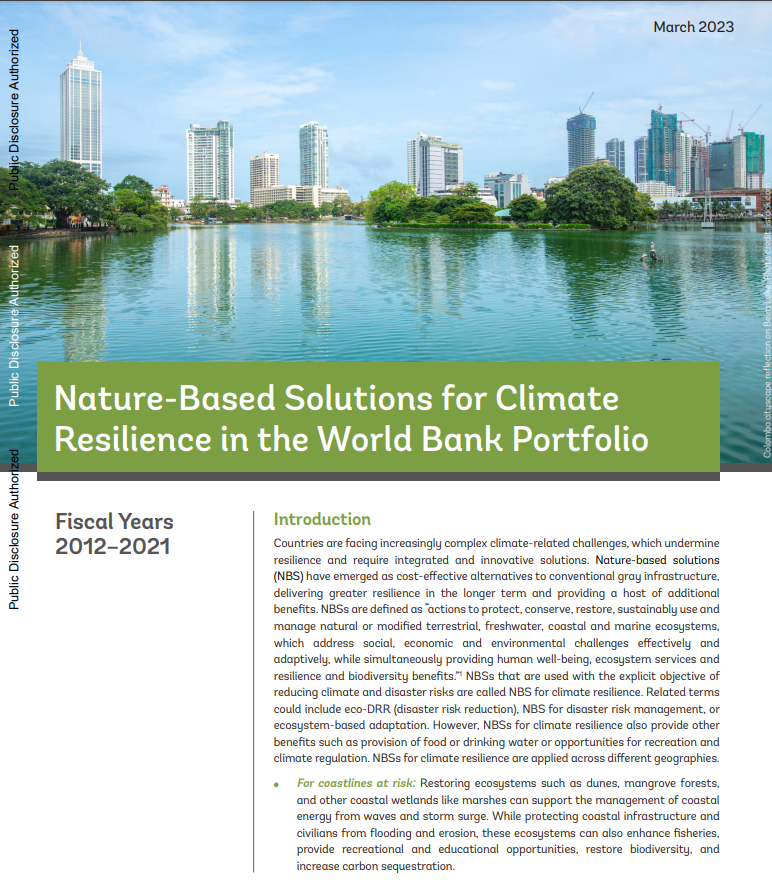Countries are facing increasingly complex climate-related challenges, which undermine resilience and require integrated and innovative solutions. Nature-based solutions (NBS) have emerged as cost-effective alternatives to conventional gray infrastructure, delivering greater resilience in the longer term and providing a host of additional benefits. NBSs are defined as actions to protect, conserve, restore, sustainably use and manage natural or modified terrestrial, freshwater, coastal and marine ecosystems, which address social, economic and environmental challenges effectively and adaptively, while simultaneously providing human well-being, ecosystem services and resilience and biodiversity benefits. NBSs that are used with the explicit objective of reducing climate and disaster risks are called NBS for climate resilience. Related terms could include eco-DRR (disaster risk reduction), NBS for disaster risk management, or ecosystem-based adaptation. However, NBSs for climate resilience also provide other benefits such as provision of food or drinking water or opportunities for recreation and climate regulation. NBSs for climate resilience are applied across different geographies. As GPNBS scales-up its effort to provide targeted support to World Bank task teams and clients, monitoring and tracking the NBS footprint in the World Bank’s portfolio will remain a key tool. This paper aims to inform World Bank and GFDRR leadership, donors, clients, and the global community on the World Bank’s progress in mainstreaming NBS for climate resilience, and to inform decisions on targeting capacity building efforts and technical support to operations.
Nature-Based Solutions for Climate Resilience in the World Bank Portfolio
March 21, 2023

